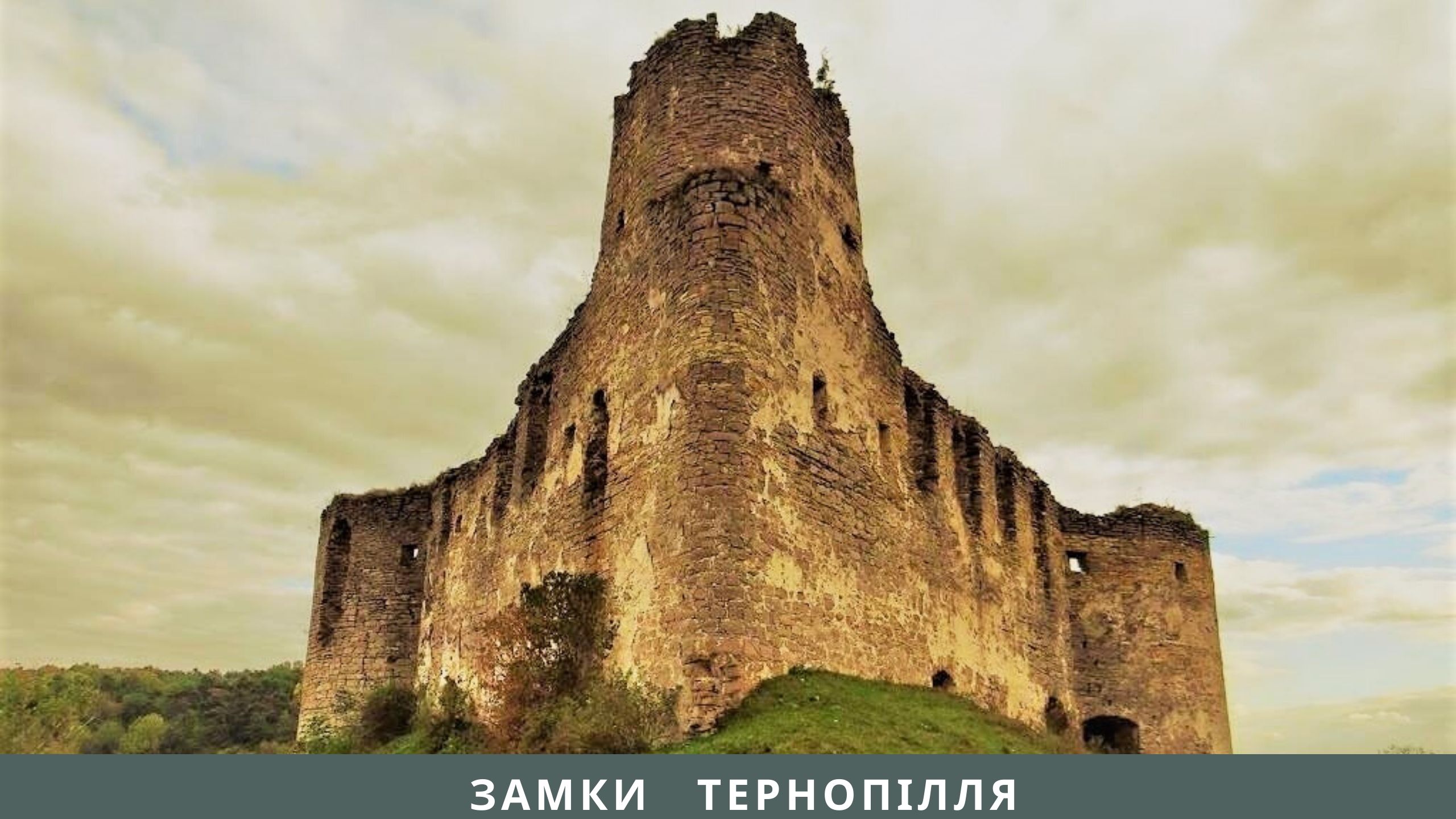Ternopil region is not very popular among foreign travelers, but actually, it is one of the most interesting destinations in Western Ukraine, and very rich in castle remains. Read this article to learn about the 5 castles of the Ternopil region: Mykulyntsi, Skalat, Sydoriv, Budaniv, and Terebovl.
Fascinating stories, brave battles, picturesque landscapes, and mystical ruins, and these are just a few of the castles of the Ternopil region, which you can see on the tour:
- 5 Castles of the Ternopil Region, Spa, Wine and Beer Tastings (2 days/1 night).
In the meantime, let’s take a virtual trip!
We will start with Mykulyntsi, famous for its brewery and other attractions.
Mykulyntsi
Mykulyntsi has a standard set of monuments of the Central European town: a castle, a church, a palace, an ancient cemetery, a brick Church of the Intercession (19th century), and a roadside figure of St. Florian (1797), patron saint of firefighters.
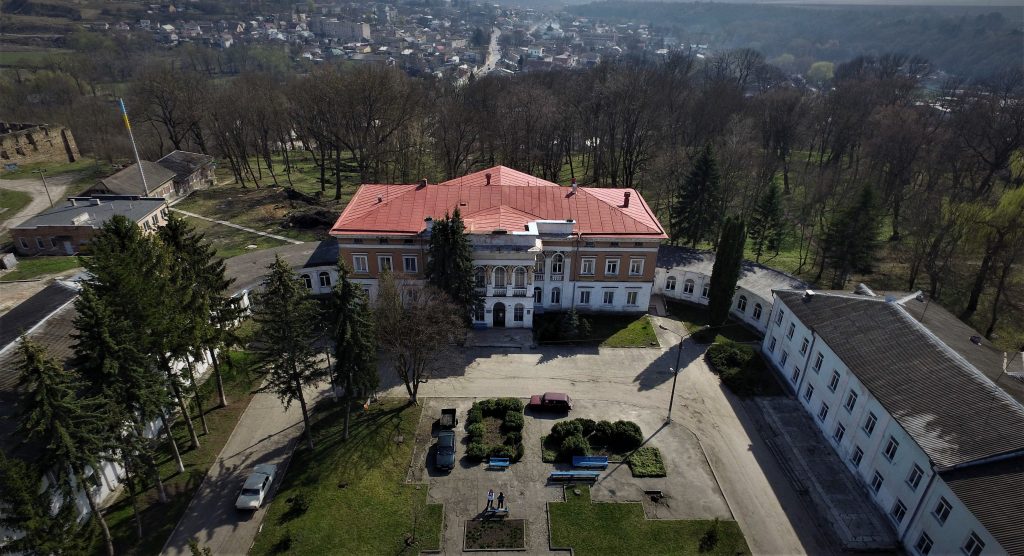
In 1555 the owner of the town Anna Yordanova built a castle in the northern part of Mykulyntsi with two corner towers and two-meter-thick walls – it was necessary to somehow defend against the Tatars that attacked Podillya almost every year. The castle gave a sense of relative security, the population of the village grew, crafts developed, so in 1595 Mykulyntsi grew to the status of a city. Traces of hot resin poured on the castle walls can be seen.
In 1672, after a 15-day siege, Mykulyntsi Castle was captured by Ottoman soldiers of Ibrahim Shishman. All the men of the city were killed, women and children were taken prisoners. According to legend, after an unsuccessful attack, the Ottomans began negotiations. The vizier issued a letter promising not to ruin Mykulyntsi and the surrounding villages and to stop the siege, saying: I will manage the money, collect the ransom. 30 Ottoman hostages served as a guarantor of his decency. The ransom was collected by the people, and the enemies were just waiting: at night they captured the castle and murdered everyone. This was the price of their honest word. Oh, if the defenders of the fortress at that time had known the modern legend about the underground passage from Mykulyntsi to Terebovlia, maybe they would have escaped from the Ottoman rage.
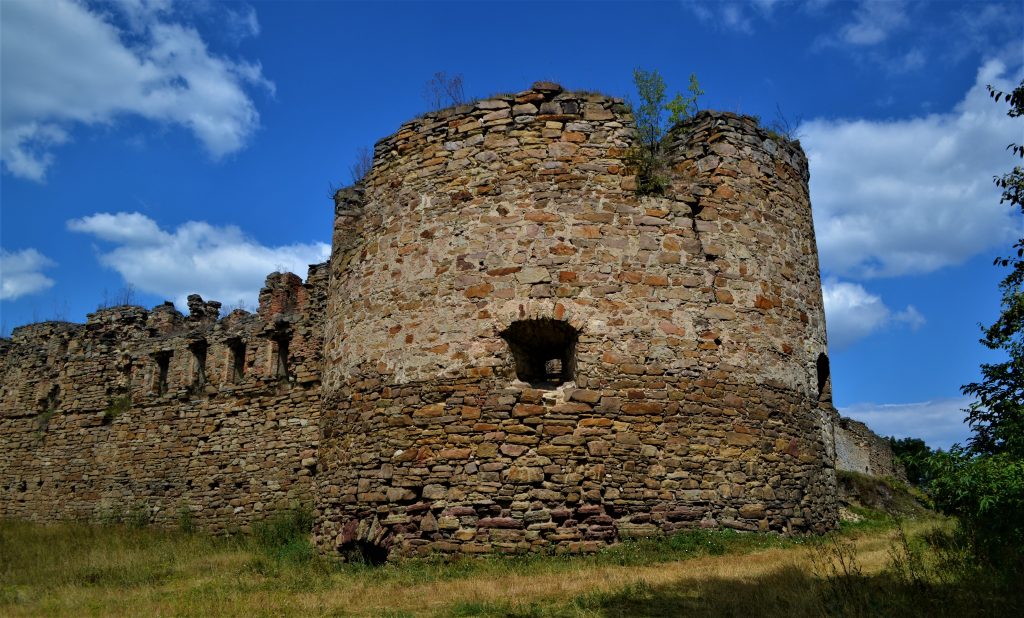
Mykulyntsi CastleYears went by. The borders were pushed back. The Ottomans stopped threatening Podillya – and people still did not understand that castles are valuable and beautiful. The ruins seemed superfluous anachronisms, they were demolished or rebuilt. This is exactly what happened in 1815 when Mykulyntsi Castle was transformed into a fabric factory by the Austrian Baron Jan Konopka. Feudalism was a thing of the past, and capitalism was only wondering if it should be born. At the same time, the baron had an idea to turn Mykulyntsi, famous for its good water and sulfur springs, into a resort: the elite of that time had already traveled full-blown to fashionable balneological spas.
The baron used the palace of Ludwig Potocka, built in the 1760s, as a sanatorium. It was a great idea, but it didn’t work out: the Austro-Hungarian aristocrats preferred the famous European “waters” and didn’t want to go to Podolsk for treatment. The fabric factory did not compete with Austrian manufactories. However, the village of Konopivka remembers the baron-businessman, which the aristocrat named in his honor. There is a water mud hospital based on hydrogen sulfide sources. Ludwig Potocka’s palace, which is the building of a balneological sanatorium, has been preserved in an abandoned park near the castle.
Mykulyntsi Castle is one of the few outposts of Ukraine where people still live. Stephanie Baloy is the daughter of the maid of the last owner of the castle, Countess Joseph Rey. The Countess allowed her mother Anne to live in the castle walls. The neighbors of the castle to the Baloy family were soldiers during World War II and a veterinary hospital in the postwar period. The castle is now in poor condition, most of the premises are littered with garbage.
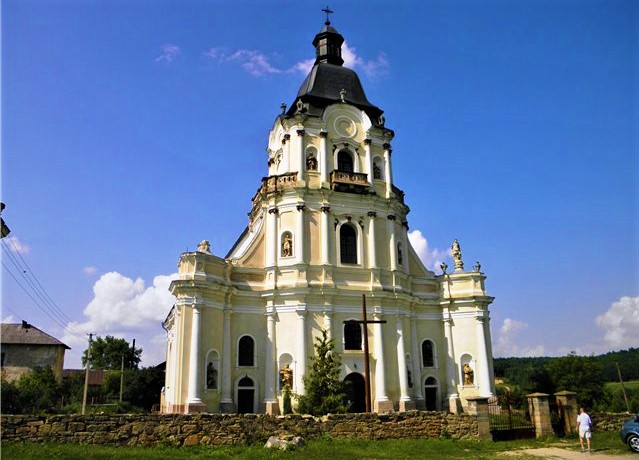
On the main axis of the palace there is a magnificent baroque church of St. Trinity of the Order of the Vincentians (1761-1779). The author of the project was the husband of Ludwig Potocka’s granddaughter, August Frederik Moszynski, who relied on the appearance of the palace church in Dresden. The temple impressed with its rich interiors. In Soviet times, the church was used as a warehouse for mineral fertilizers, and in 1989 the shrine was returned to Roman Catholics. The heavily rebuilt building of the monastery cells (1780) has been preserved.
From the 1830s, the Mykulynets filwark was owned by Counts Rei (a branch of the Potocki family). A magnificent tombstone of this genus is preserved in the cemetery below the church.
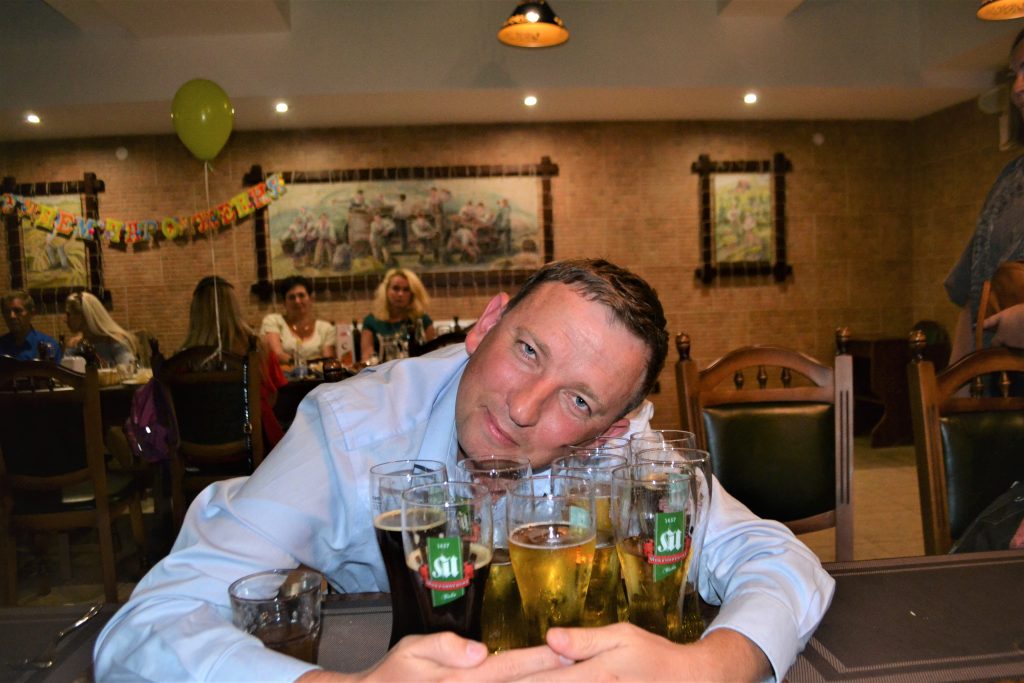
Tasting beer in MykulyntsiAnd on the opposite side of the hill with a park and palace, there is Brovar brewery that has been operating in the village since 1497.
Skalat
Although only 4,000 inhabitants live in Skalat, you know at once that we are not facing a village, but a city. The air here is imbued with that urban aura. The main attraction of the city are four sleek castle towers, visible from afar. And when the sun sets, and the towers are reflected in the pond formed by the floodplain of the Hnyla River… Beautiful!
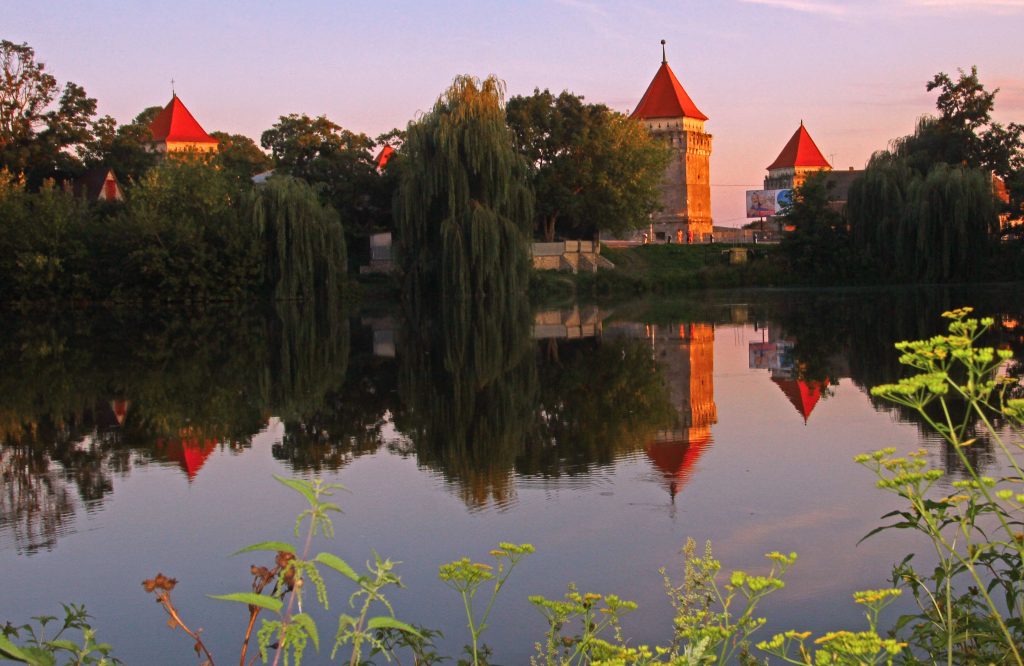
Only the nobleman Krzysztof Wichrowski, who built the Skalat Castle in 1630, did not conceive of a romantic building. He was thinking about defense, not aesthetics. As a result, pentagonal towers oriented around the world were erected, and a deep ditch filled with river water was dug. The nobleman had to protect the city from Tatars and Ottomans, and the Cossacks. It was the Cossacks who twice destroyed the fortress: in 1648 and 1651. Destruction was completed by the Ottomans in 1672. After that Skalat Castle turned into ruins.
The new owner of Skalat, Jan Firley, rebuilt the fortress at the end of the 17th century to be used for housing. Near the eastern wall grows a palace, in the north-eastern fortress wall there is a beautiful entrance gate, decorated with a stone knight and a memorial plaque describing the history of the castle. The old towers were also renovated: the upper two tiers were built of brick and lined with hewn regular blocks of limestone. The walls of Skalat Castle on all sides reached two meters thick.
We do not know what that castle looked like: what we see today is the result of the next reconstruction of the complex in the late nineteenth century. Then, at the expense of the Count of Rostov, the prominent Polish architect Theodor Talowski restored the towers in the neo-Gothic style. The word “restored” should be put in quotation marks: it was more like a flight of fancy than a reproduction of the past.
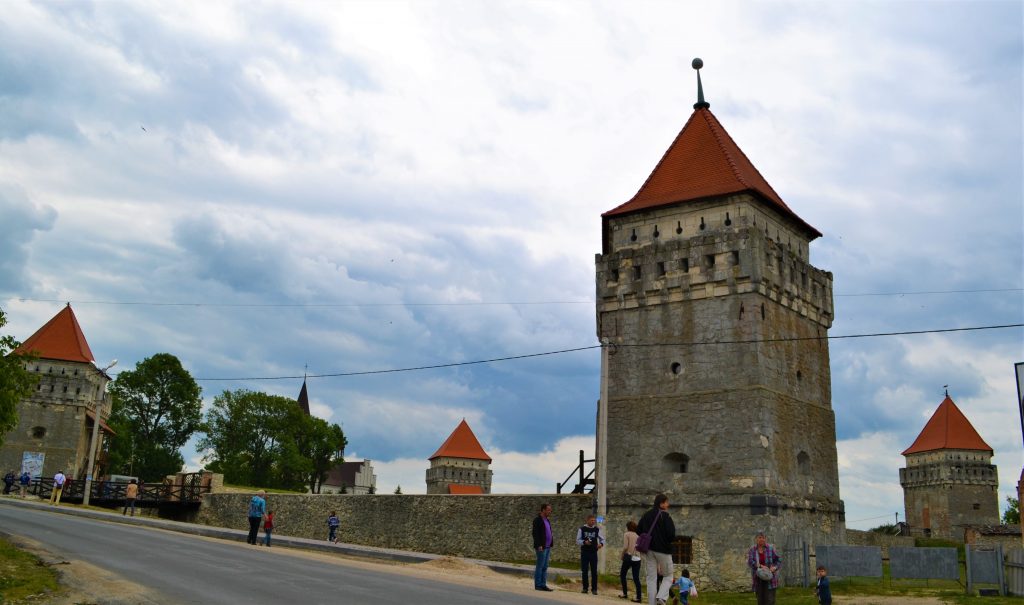
Skalat castleAfter the First World War, the palace barely survived, after the Second it disappeared forever. All that remained were the towers, lonely deprived of the walls that had once entwined them in their arms. And deep cellars and a ditch littered with garbage.
Now Skalat Castle is coming to life. It is being restored. There is an exposition in one of the towers, holidays and festivals are held in the castle yard. This is no longer a ruin, but a beautiful tourist attraction. There would be more of them in Ternopil and our country.
Sydoriv
One of the most interesting villages of the region – Sydoriv – is located 8 kilometers from the district center of Husiatyn (where there was also a castle, which has not survived). We pass the old cemetery, the church, and behind it, there is an amazing panorama: on the left two towers of the baroque church striving into the sky, and on the right, on the next hill, the castle-ship floats through time and corn from the neighboring gardens.
We respectfully walk along the path that winds from the chapel near the church. Sydoriv castle demonstrated to us its most presentable north-western side. A gray liner of sandstone rises above a small river, which is not visible behind the bushes. The two longitudinal defensive walls are connected at an acute angle. With a length of 178 m, the fortress has only 30 m in the widest place.
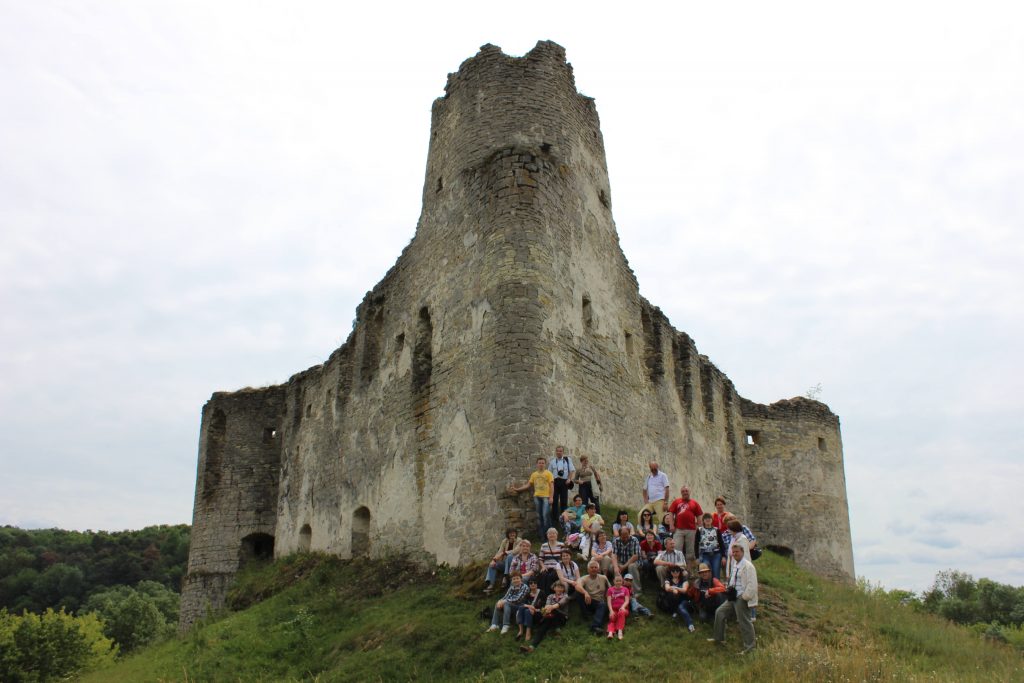
Nature gave a hint to the magnate Martin Kalinowski (1605–1652) about a plan of Sydoriv Castle, which grew on a hill around 1640: the Sukhodil River washes the high plateau on three sides, and impregnable bastions are erected on the fourth side. The irony of fate: it is the most fortified south-eastern part is completely destroyed. Locals say it was blown up in the late 1960s by the head of the collective farm.
The defensive node, located on the north-western side of the fortress, is relatively well preserved. Casemate fortifications, residential and farm buildings were erected here. There used to be seven towers on the walls of the outpost. The western tower, which rules the entrance, has been preserved, decorated with a stone slab on which the history of the castle is engraved in Latin.
In 1672, most of Podolia was captured by the Ottoman Empire, which controlled it for 27 years. Sydoriv Castle was also captured, which was abandoned after the destruction until 1718 when the Kalinowskis undertook reconstruction. But in the enlightenment of the 18th century, it was unfashionable to live in the damp fortress rooms. Nothing came out of the reconstruction.
In the 19th century, the castle was turned into a picturesque ruin. In the 21st century, it remains picturesque. Next to the funnel in the ground, which outlines the location of the ruined tower, grows a tall pine tree: a nearby coniferous forest sent his paratrooper to explore new territory.
The Kalinowskis summoned Dominican observant monks to Sydoriv. A huge temple (1730) remains a reminder of those times. The initial plan of this building was developed by the talented Jan de Witte, the commandant of the Kamenets fortress. Due to the planning, the Sydoriv church can be considered architectural unique. It is difficult for a tourist to understand what is so unusual in a narrow presbytery and an acute-angled apse. The fact that the building has the shape of the Kalinov coat of arms in honor of the Kalinovskys will help to facilitate understanding. Proud magnates had the idea to build a heraldic shrine: an arrow on a bow with two stars. The heraldic plan of the church was not given immediately, but there was a master who was able to perform an eccentric whim. The elongated nave of the temple symbolized an arrow, a rectangular presbytery with a triangular grotto – a bow, and the builders gave the towers in terms of an exquisite star shape.
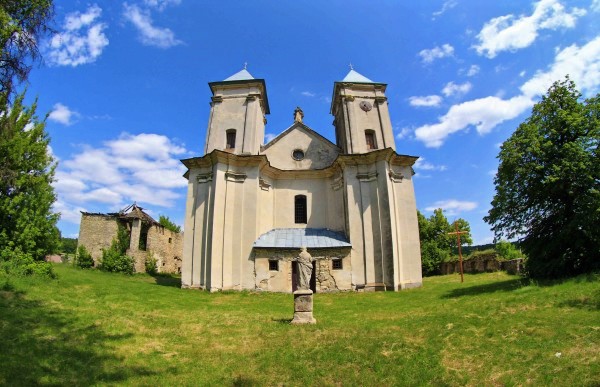
Monastery of the Immaculate Conception of the Blessed Virgin MaryThe main entrance is closed, but through the side chapel you can go to the church and see the remains of wooden altars and pulpits, the skeleton of a toothless organ devoid of all pipes, and the main altar. Above the temple hangs a statue of the Virgin. The virgin looks to the west, folding her arms in prayer. The Mother of God is looked down upon by her stone fellow saint, another Mohican of the best of times who “settled” in a chapel near the temple.
And after visiting the three fortresses, it’s time to drink good Husiatyn wine and relax in the spa, and this is only the first part of the tour:
- 5 Castles of the Ternopil Region, Spa, Wine and Beer Tastings (2 days/1 night).
Budaniv
Ahead is Budaniv, the former town and even the former district center. In a picturesque place above the Seret, surrounded on three sides by mountains, people have settled for a long time. Around 1549, the Galician voivode Yakub Budzaniv built a wooden castle on one of the hills. The tycoon gave his name to the settlement, which until then was called Skomros.
The current Budaniv will stay named Budzaniv until 1946 and then lose the letter “z”. At the beginning of the 17th century. Budzaniv’s owners Jan and Martin Khodorkovsky built a rectangular brick fortress with four corner towers on the site of the old castle. Budaniv Castle twice successfully withstood the Cossack siege during the Liberation War of 1648-1653, although during the third attack in 1651 and lay looted.
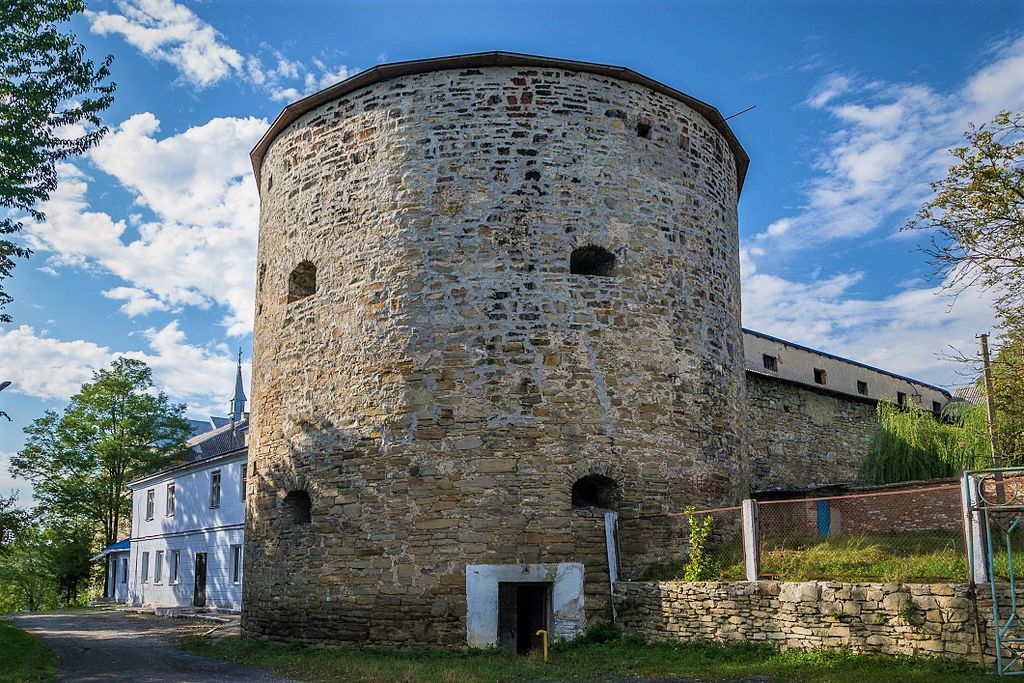
The description of the castle in 1661 shows that the roofs and floors rotted, the towers and walls had holes, the bridges and shooting galleries rotted, the stoves collapsed. After the Ottoman attack in 1675, Budaniv Castle was destroyed. At that time, people remembered the legend of how the Ottomans pushed the Budzans from Terebovlia. Warned residents took refuge behind the castle walls, and at night a weeping female voice asked to have mercy, if not on her, then at least on the child, to take the baby under the protection of the walls. Since the enemy seemed to be still far away, the gate was opened. It was an Ottoman trap: the janissaries killed all of Budzaniv’s defenders. The dead were buried in a tract near the fortress. Women and children – each separately, and men in three mass graves. Since then, the location is called the Pohybnitsia (Ukr. ‘decease’).
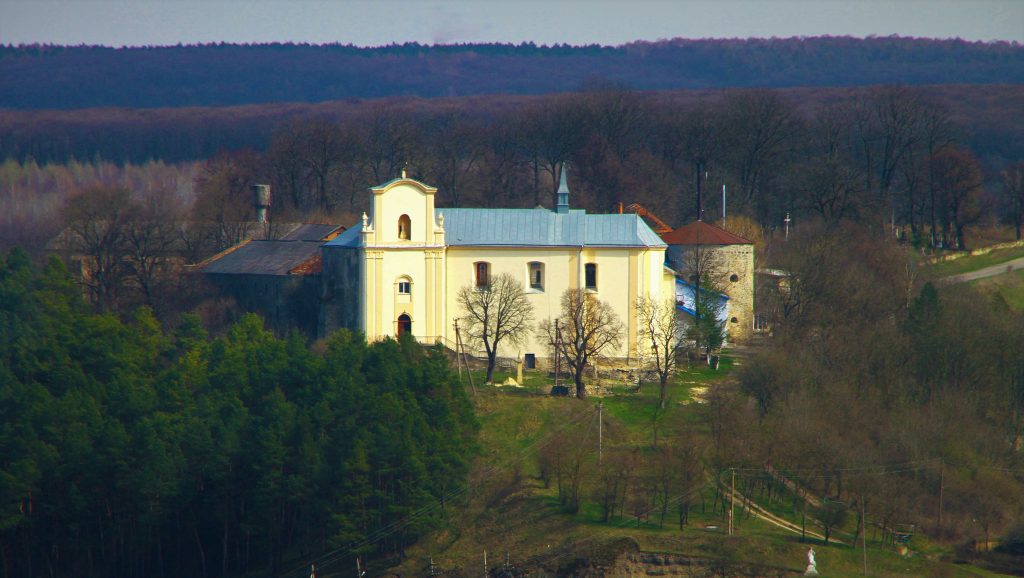
In 1765 the western part of the castle walls was rebuilt into a church. In 1846, a convent of the Sisters of Charity and a hospital were added to the eastern wall. The monastery was badly damaged during the First World War. And in 1956 the restored complex worked as a psychiatric hospital.
The village spread across a large puddle in front of the hospital outpost. From the hills Budaniv looks more impressive: in some places you can see the houses of the Austrian times, the tops of the temples shine in the sun. Near the castle hill, tourists are greeted by a plaster collective farm worker with a large sheaf of wheat under its armpit. The right hand supports the side, the face is directed towards the church: let’s see, they say, who is our master here now. The institution in Budaniv still works today. Do not be afraid of itspatients: you will not see them, unless a nurse in a robe will come to the doorstep and will closely monitor your movement through the territory of the former fortress.
Terebovlia
Budaniv Castle is very close to the town of Terebovlia. What interesting things can you see in Terebovlia? It seems that a city with such a crystal name simply has to have a long history and a castle on a high mountain. Both the first and the second are in Terebovlia. And more people would know about it, if not … the park. Once the castle hill was bald, the fortress hung over the city as a formidable guard. But in recent decades, the slopes have been covered with greenery – and Terebovlia Castle is harder to see.
Well, let it be. The more interesting it will be to climb the steep path to the ruins of the once-mighty outpost. Under the old walls are even older remains of a large Slavic settlement. It also occupied the area between the mountain and the river Hnizna – now these neighborhoods are called the Old Town.
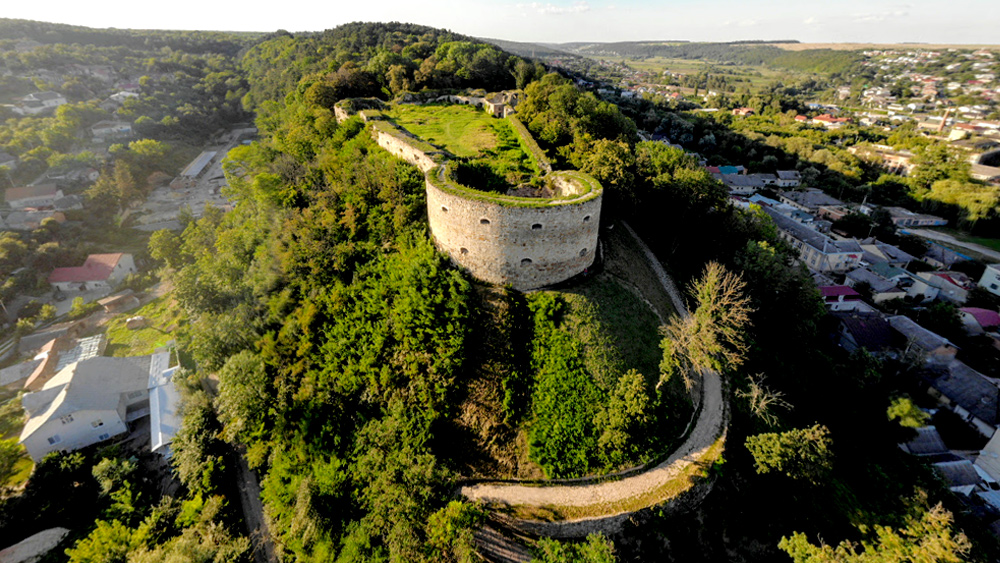
Terebovlia castleThe local fortress was clad in stone in 1366, although what tourists see now dates back to 1631. The time was turbulent, towns and villages suffered from the invasions of Tatars and Ottomans, and fortresses were forced to fortify. So Terebovlia Castle has become stronger: its walls are up to five meters thick! The new-fashioned bastion system was just beginning its triumphant march in western Ukraine – and did not reach Terebovlia. And where to get a place on the castle hill for escarpments and bastions: the builders reconstructed as they did a century before them. Here the planner-architect was not a military engineer, but Nature. What is the symmetry here, where? There are not even two similar towers. One, the one looking at the city – a giant, elliptical. There are also square and pentagonal. Are the loopholes in all the towers similar? And it was not about aesthetics: the castle had a renaissance entrance in the eastern wall. The remnants of the plaque, which we see on the largest tower, appeared when the fortress turned from a formidable beast into a humble grandfather.
And then, in the 17th century, the fortress was almost impregnable. “Almost” – Tatar troops burned the fortress on May 9, 1687. Since then, the outpost has not been restored.
Now Terebovlia Castle is a collection of ruins. Near the ruins of the fortress, which deserved such a state at least a century, there is a dilapidated summer theater, which remembers the best times. A few years ago, a restored monument to Sophia Khrzhanovska, a semi-mythical heroine of the Terebovlia defense against the Turks, was erected on an old pedestal (1900) in September 1675. At that time, the castle garrison, led by Jan Khrzhanovsky, protected the city. Whether Sophia herself defended the fortress with a sword in her hand, or threatened to stab her husband first and then herself in the event of defeat, folk memory is confused, offering two versions of the same event. The result was one: the fortress lasted until the time when Jan Sobieski’s army arrived here – and the Ottomans had to stop the siege.
The forgetful History has not found out the exact name of the wife of Commandant Khrzhanovsky. It follows from his will that his name was Anna Dorota von Fresen. The name “Sophia” first appears in 1828 in a poem by Zaborowski, although sometimes poets called the woman Malhozhata.
Now the city of Terebovlia again lacks someone who could defend the castle from an enemy more serious than the Ottomans. Everyone obeys this enemy, especially those who are indifferent and have forgotten their history. This enemy is time. It treated Terebovlia Castle cruelly.
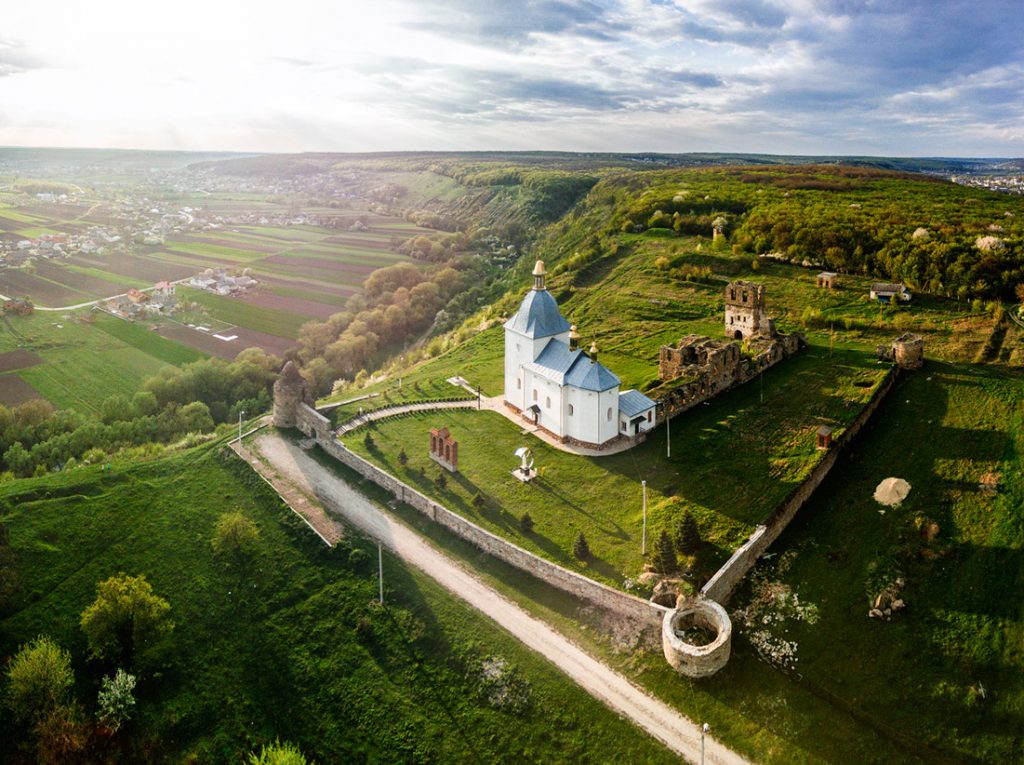
Pidhora monastery
A few kilometers south of the district center, among the forests on the mountain, there are towers and a white church. We are approaching the ancient Pidhoriansky Spassky Monastery. For a long time, its territory belonged to the military unit, which had a detrimental effect on the state of the monument. The exact date of the foundation of the monastery is unknown. One can refer only to indirect evidence, such as the Specification of documents and foundations of the Basilian monasteries from 1776: it states that the monastery was founded by Kyivan Rus princes Vasylko and Volodar Rostyslavych in the twelfth century. The first documented mention of the monastery dates back to 1650. At the beginning of the 18th century the monastery, famous for its icon of the Mother of God, was one of the most important monasteries in the Podolia region. It is possible that the north-eastern tower served the monks as an astronomical observatory. On January 1, 1789, the monastery was closed by order of the Austrian authorities. In the early twentieth century, the church was restored. During the First World War, the Russians blew up the walls, arguing that the fortification was Austrian. And the looters were followed by looters from the locals, who snatched the church utensils, tore the tin from the roof and dismantled the fence. After the Second World War, the defensive walls continued to be torn down – roads were made of them. It was not until the early 1990s that the monastery was given back to the faithful. The parishioners of the villages of Zelenche and Pidhory rebuilt the church.
We invite you to visit these incredible castles of the Ternopil region and other destinations on our tour:
- 5 Castles of the Ternopil Region, Spa, Wine and Beer Tastings (2 days/1 night).

